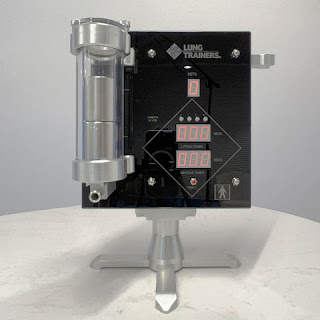Breathing Exercises For Singing
Perhaps the most obvious performers who can benefit from breathing techniques for musicians are vocalists. It's easy to see why: good breathing helps to keep a singer's voice steady as they approach the upper and lower boundaries of their vocal range, and It also lets the vocalist hold a single note or phrase for a longer amount of time. This is especially true for singers with a piece of traditional background music. You don't need to be able to strike and keep one note merely for opera or choral singing.
Several features can also be found in "modern" music forms. Rock vocalists such as Robert Plant and Freddie Mercury are known for their huge pipes. Rock music is defined by its attitude. The truly outstanding singers, on the other hand, have a firm foundation in vocal strength and technique. (Freddie Mercury, on the other hand, was quite operatic.) Of course, we're not implying that these or other rockers received the same formal education as classical singers. Exercise, on either hand, will help you reach similar vocal prowess.

Breathing exercises for singing are unique in that it can be difficult to distinguish between routines designed to strengthen the lungs and diaphragm and those designed to "warm-up" the vocal cords before singing. Standard vocalization exercises can equally be used as singing breathing exercises (you usually sing up and down one scale in a single breath). It's a wonderful deal because you'll be able to kill two birds with one stone. Sports-related activities can be added to traditional vocalization exercises. Singers who also swim or run daily may find that they have an advantage over other vocalists when it comes to regulating their breath.
A good set of lungs is also beneficial to musicians. Circular breathing is very beneficial for musicians who play wind instruments. (If you've ever had a harsh conductor who insists on playing extended fermatas at the grand finish of a piece, you know how difficult it can be to keep a long note going.) Circular breathing involves inhaling and exhaling at the same time. This means you can keep blowing through your endless fermata while still getting the air you require. It's a difficult skill to master, and even the most accomplished musicians struggle with it. When they inhale, for example, their exhalations may become weaker, resulting in volume and sound quality changes. Also, learning circular breathing is not like riding the proverbial bicycle. You do not just learn it once, and then rely on it to come back to you later on. This skill can be lost without regular practice, so establishing a routine and staying committed to it is very important.
Actors, too, require breathing exercises. Even if modern theatres (at least those with sufficient money) are equipped with numerous microphones, an actor must still worry about maintaining a strong, expressive voice, especially if he or she is fortunate enough to have plenty of work. Actors' exercises are similar to singers', with the exception that there is less attention on pitch. A healthy set of lungs and a strong diaphragm, as well as stage presence and thick skin, are essential for every style of performance.
Source Url :- https://sites.google.com/view/lungtrainero/home

Comments
Post a Comment